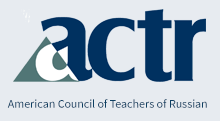Russian Language Journal
Keywords
Russian, heritage, language, English, school
Abstract
In 2005, a consortium of schools consisting of Bryn Mawr College, University of Maryland, University of California Los Angeles, and Middlebury Summer School was formed in order to launch a Russian Flagship Program. Both participants and NSEP 1 felt that these universities would bring different strengths to the program: Maryland and Bryn Mawr, for example, would attract students returning from a year-long study abroad experience in Russia as administered by American Councils, and UCLA would attract heritage language learners from large Russian communities in both Northern and Southern California. As expected, the first cohort of UCLA Flagship students consisted of heritage language speakers only.
The Consortium was replaced in 2009 by several independent Flagship Centers, and the focus shifted from recent graduates or students in their senior year to undergraduate students at all levels. Since then, the UCLA Flagship program has steadily made a transition to a program with both HLLs and L2 learners.
In this paper, the term heritage language learners (HLLs) refers to students who grew up in a home where a language other than English was spoken, and whose language development was interrupted by a switch to English once students started school (Polinsky & Kagan 2007). As a result, heritage learners typically have some oral/aural proficiency in the home language, but may not have any literacy. Kagan and Dillon (2005) argued that “At the beginning of the 21st century in the United States, Russian heritage learners are the children of the third, fourth, and later waves of immigration whose level of competency in Russian is directly tied to the amount of education they received in the former Soviet Union.” However, many of the heritage students in our program were born in the former Soviet Union, but came to the U.S. at an early age and therefore did not receive any education in a Russian-speaking country.
Recommended Citation
Kagan, O., & Kudyma, A. (2019). Heritage Language Learners of Russian and L2 Learners in the Flagship Program: A Comparison. Russian Language Journal, 69(1). https://doi.org/10.70163/0036-0252.1039

